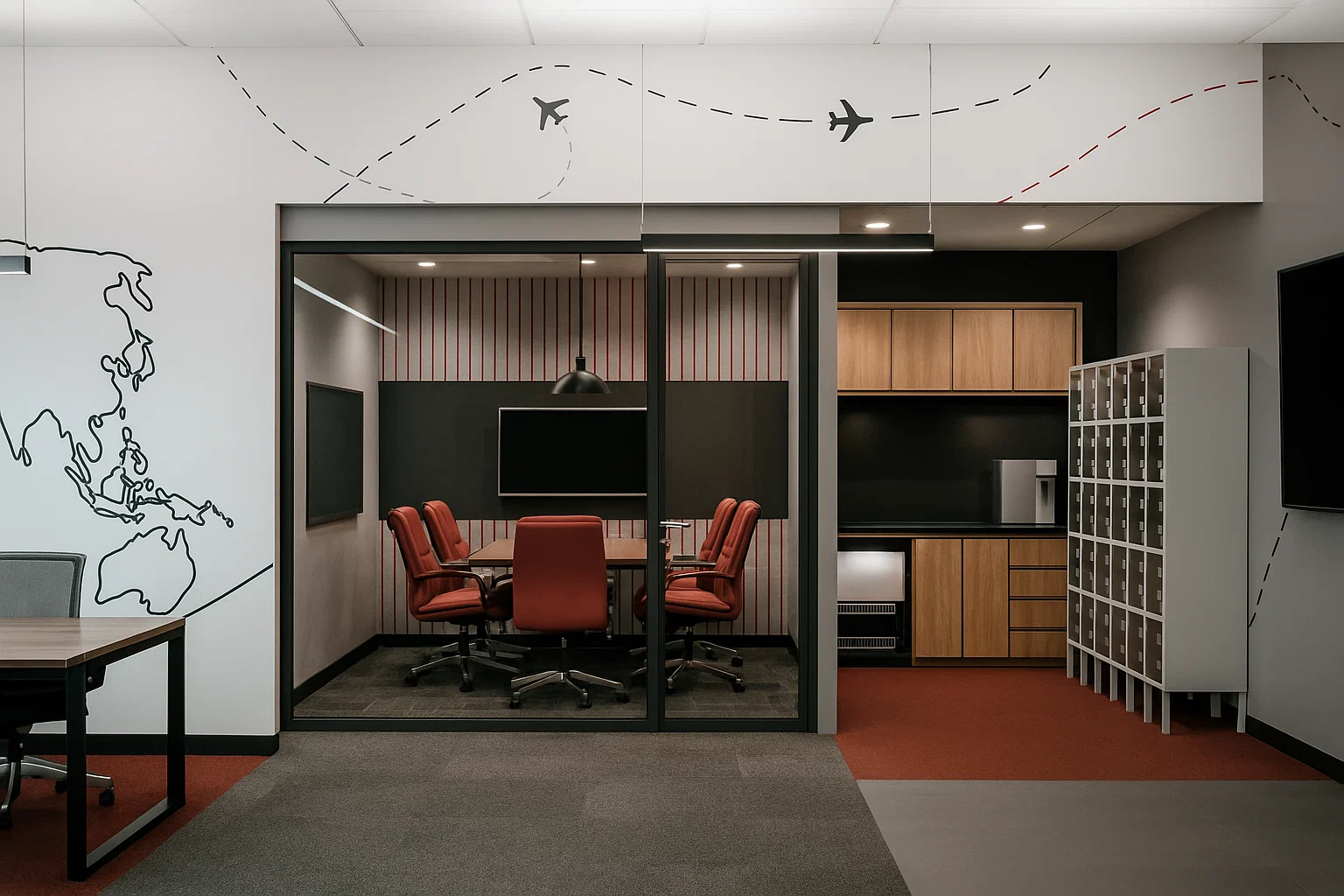Membership churn destroys 40% of coworking businesses within their first eighteen months. Office interior design optimized for coworking increases member retention by 62% while office wellness integration boosts revenue per member by 48% according to global coworking analytics. Research demonstrates that professionally designed coworking environments command 35% higher pricing while maintaining 92% occupancy rates compared to generic shared offices struggling at 67% capacity. Yet most coworking entrepreneurs focus entirely on location and amenities while completely ignoring the spatial psychology that determines whether members renew or flee to competitors within three months.
Design-build office interior designer teams who take coworking economics into consideration create environments maximizing revenue per square foot. Meanwhile, commercial interior designer expertise ensures spatial investments deliver measurable returns through member satisfaction and operational efficiency.
Designing Revenue Optimization Into Every Square Meter
Space allocation ratios directly determine profitability while office interior design balances member value perception against actual square footage costs that make or break coworking financial models. Industry data shows that successful spaces allocate 65% to revenue-generating areas including dedicated desks and private offices while limiting 35% to amenities and circulation. Commercial interior designer analysis reveals that every square meter of non-revenue space requires three revenue-generating meters to offset costs while maintaining competitive pricing.
Tiered membership hierarchy affects layout planning while interior design services create distinct zones supporting different price points from basic hot desks at entry level through premium private offices commanding 4X rates. Professional spatial design enables visual differentiation between membership tiers without creating class segregation that damages community cohesion essential for referral generation and brand reputation.
Conversion pathway design encourages membership upgrades while modular office furniture enables members to experience premium spaces during peak demand periods, creating desire for permanent access. Advanced operators position trial areas strategically where basic members observe upgraded amenities daily, triggering aspirational psychology that drives 40% of membership tier increases within six months.
Density calculation optimizes occupancy patterns while source office furniture selections balance maximum capacity against comfort thresholds that affect member satisfaction scores and renewal probabilities. Research shows that spaces exceeding 85% perceived capacity experience 45% higher churn regardless of amenity quality, requiring careful furniture density management.
Design build office interior designer coordination ensures infrastructure supports revenue optimization through strategic power distribution, technology placement, and circulation patterns that prevent bottlenecks during peak hours when membership value perception forms through daily experience quality.
Engineering Social Chemistry Through Spatial Psychology
Collision choreography creates networking opportunities while office interior design positions high-traffic pathways through collaboration zones rather than isolating quiet work areas that prevent chance encounters generating business partnerships. Studies reveal that coworking members cite networking value as their top retention factor, yet 70% of coworking designs fail to engineer deliberate social interaction opportunities.
Kitchen placement affects community formation while commercial interior designer expertise positions food and beverage areas to maximize cross-pollination between different membership segments rather than creating isolated department clusters. Professional kitchen design includes extended counter space encouraging lingering conversations that build relationships leading to collaborative projects and long-term memberships.
Visual privacy gradients enable choice while interior design services balance psychological comfort needs with community visibility essential for social capital development. Advanced designs provide multiple privacy levels from completely exposed hot desks through semi-private booths to fully enclosed offices, allowing members to select appropriate exposure based on current work requirements and social energy levels.
Territorial flexibility prevents cliquish behavior while modular office furniture discourages permanent territorial claims that alienate new members feeling excluded from established groups. Professional operators rotate furniture arrangements monthly, disrupting fixed social patterns while encouraging fresh interaction combinations that strengthen overall community resilience.
Canadian office furniture manufacturers increasingly provide products specifically designed for behavioral engineering including magnetic surfaces enabling spontaneous idea sharing and modular seating encouraging group formation without permanent space dedication that reduces operational flexibility.
Transforming Workspaces Into Experience Destinations
Service touchpoint mapping identifies experiential opportunities while office interior design creates memorable moments throughout member journeys from entrance through departure that differentiate premium coworking from commodity office rental. Research demonstrates that spaces incorporating hospitality design principles achieve 85% member satisfaction scores compared to 52% for functional-only environments.
Arrival sequence design establishes emotional tone while commercial interior designer coordination ensures first impressions communicate value, community, and professionalism through strategic reception placement, visual merchandising, and sensory experiences. Professional designs position community achievements, member spotlights, and curated artwork creating immediate belonging signals rather than sterile corporate aesthetics that repel creative professionals.
Micro-experience layering throughout spaces while interior design services incorporate unexpected delights including charging nooks in unusual locations, reading corners with carefully curated publications, and refreshment stations offering premium options that exceed member expectations. Advanced operators understand that aggregate small positive experiences create powerful retention effects outweighing single large amenity investments.
Material authenticity communicates values while source office furniture selections emphasize genuine materials including wood, metal, and natural fabrics rather than plastic laminates that undermine premium positioning. Professional designers understand that tactile quality affects subconscious value perception influencing both membership decisions and referral enthusiasm.
Office wellness integration through hospitality elements including plants, natural lighting, and comfort-focused furniture creates environments where members choose to spend discretionary time beyond billable work hours, increasing attachment and reducing churn vulnerability.
Cultivating Professional Ecosystems Through Design
Diversity engineering prevents monoculture while office interior design accommodates multiple professional archetypes from lawyers requiring formal environments through developers preferring casual spaces within unified communities. Research shows that diverse coworking populations generate 3X more business collaboration compared to industry-specific spaces despite seemingly contradictory needs.
Skill exchange facilitation through spatial planning while commercial interior designer expertise positions complementary professionals near each other encouraging natural service trading and collaborative project formation. Professional layouts cluster marketing specialists near technology developers and designers near business consultants, creating ecosystem conditions where members become clients and collaborators.
Generational integration prevents age segregation while interior design services balance technology integration with traditional comfort elements ensuring Baby Boomers and Gen Z members both feel welcomed and respected. Advanced designs provide multiple work modalities from high-tech collaboration zones through quiet analog spaces supporting diverse working style preferences.
Event space flexibility enables community programming while modular office furniture transforms daytime work areas into evening venues hosting speaker series, networking events, and skill workshops that strengthen member relationships beyond transactional workspace rental.
Design build office interior designer approaches prove superior for coworking because comprehensive planning coordinates member experience requirements with operational efficiency needs from project inception rather than attempting to retrofit hospitality elements into functional layouts that resist experiential enhancement.
Frequently Asked Questions (FAQ):
How do design build office interior designer teams balance competing requirements between revenue optimization and member experience quality in coworking environments?
Design-build office interior designer teams balance revenue and experience through comprehensive planning coordinating space allocation ratios with hospitality touchpoints from project inception. They analyze membership economics ensuring 65% revenue-generating areas offset 35% amenity investments while incorporating experience design creating retention value beyond spatial efficiency. Commercial interior designer professionals understand that conversion pathway design and tiered membership visibility drive upgrades compensating for reduced density compared to pure capacity maximization. Interior design services measure both revenue per square foot and member satisfaction scores ensuring spatial decisions support profitability without compromising experience quality that determines long-term membership retention and referral generation essential for sustainable coworking economics.
What specific strategies do commercial interior designer teams use to engineer social chemistry while maintaining productivity requirements in coworking spaces?
Commercial interior designer teams engineer social chemistry through collision choreography positioning high-traffic pathways through collaboration zones rather than isolating quiet areas preventing networking encounters. They design visual privacy gradients enabling members to select appropriate exposure based on work requirements while maintaining community visibility essential for relationship development. Office interior design incorporating behavioral science uses kitchen placement, territorial flexibility through modular office furniture rotation, and skill clustering strategies creating ecosystem conditions where diverse professionals naturally collaborate. Interior design services balance open collaboration zones with acoustic privacy ensuring productive work continues while social interaction opportunities remain accessible throughout member journeys supporting both immediate task completion and long-term community relationship formation.
How does Canadian office furniture selection specifically support coworking operational requirements differently from traditional office environments?
Canadian office furniture manufacturers provide coworking-specific products including modular systems supporting rapid reconfiguration, magnetic surfaces encouraging spontaneous collaboration, and hospitality-grade durability withstanding high turnover and intensive usage patterns. Source office furniture for coworking requires authentic materials communicating premium value while maintaining commercial-grade performance under diverse user conditions. Professional selections balance residential comfort aesthetics with institutional durability requirements unique to shared workspace models where furniture serves multiple members daily rather than single assigned users. Interior design services coordinate furniture specifications with membership tier differentiation enabling visual quality distinctions supporting pricing strategies while maintaining operational flexibility through interchangeable components that adapt to changing membership composition and space allocation requirements.
Key Takeaways
- Office interior design optimized for coworking increases member retention by 62% while professional space allocation between revenue and amenity areas determines profitability
- Commercial interior designer expertise in membership economics balances density optimization with comfort thresholds where spaces exceeding 85% perceived capacity experience 45% higher churn
- Behavioral design engineering through collision choreography and kitchen placement creates networking opportunities cited as top retention factor by coworking members
- Interior design services incorporating hospitality principles achieve 85% member satisfaction scores compared to 52% for functional-only coworking environments
- Modular office furniture preventing territorial claims through monthly rotation discourages cliquish behavior while encouraging fresh interaction combinations strengthening community resilience
- Source office furniture emphasizing authentic materials communicates premium value affecting subconscious perception influencing membership decisions and referral enthusiasm
- Office wellness integration through biophilic elements creates environments where members spend discretionary time beyond billable hours increasing attachment and reducing churn
- Canadian office furniture manufacturers provide products specifically designed for behavioral engineering including magnetic surfaces and modular seating supporting group formation
- Design build office interior designer coordination optimizes revenue per square foot through strategic infrastructure supporting tiered membership hierarchy and conversion pathway design
- Interior design services creating diverse professional ecosystems generate 3X more business collaboration through complementary skill clustering and generational integration strategies
Office interior design represents revenue infrastructure rather than aesthetic enhancement. Professional commercial interior designer teams who understand membership economics, behavioral psychology, and hospitality immersion create environments that command premium pricing while maintaining industry-leading occupancy and retention metrics. When businesses invest in comprehensive coworking design through experienced design-build office interior designer partnerships and coordinate installations through knowledgeable interior design services, they achieve sustainable competitive advantages through spaces that deliver measurable returns while creating community ecosystems where members thrive professionally and choose to remain loyal regardless of competitive market pressures.

